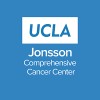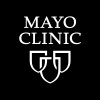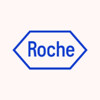
Rituximab+Standard CHOP vs Rituximab+Bi-weekly CHOP for Untreated Stage III/IV Low-grade B-cell...
LymphomaB-CellTo establish standard therapy for patients with advanced-stage low grade B-cell lymphoma

Denileukin Diftitox in Treating Patients With Relapsed or Refractory Non-Hodgkin's Lymphoma
LymphomaRATIONALE: Biological therapies, such as denileukin diftitox, may be able to carry cancer-killing substances directly to non-Hodgkin's lymphoma cells. PURPOSE: This phase II trial is studying how well denileukin diftitox works in treating patients with relapsed or refractory B-cell non-Hodgkin's lymphoma.

Phase II Study of RT-PEPC in Relapsed Mantle Cell Lymphoma
Non-Hodgkin's LymphomaPrimary Objective: Evaluate the clinical activity of the RT-PEPC combination regimen (rituximab, thalidomide, and prednisone, etoposide, procarbazine, cyclophosphamide) in patients with relapsed mantle cell lymphoma. Specifically, response rate (RR) and time to disease progression (TTP) will be assessed. Secondary Objectives: Assess the toxicity profiles of RT-PEPC treatment in patients with relapsed mantle cell lymphoma. Prospectively characterize the angiogenic profile of patients with mantle cell lymphoma during treatment with RT-PEPC. The dynamics of the angiogenic profile will be correlated with clinical response to RT-PEPC therapy. Assess the quality of life of patients receiving RT-PEPC treatment

Chemotherapy With CD133+ Select Autologous Hematopoietic Stem Cells for Children With Solid Tumors...
NeuroblastomaCentral Nervous System Tumors2 moreStudies have provided evidence that residual microscopic malignant cells in autologous bone marrow or blood stem cell grafts can contribute to posttransplant relapse. Researchers are currently exploring different methods in an attempt to purify or "purge" the stem cell product to minimize the risk of tumor contamination. The CD133+ antigen is a protein contained on or "expressed" on numerous cells in the human body including specific hematopoietic progenitor (blood forming) cells. However, this antigen is not expressed on certain cancer cells including neuroblastoma. A technique using the investigational CliniMACS cell sorting device has been developed in an effort to filter out only those stem cells that express this CD133+ antigen in order to infuse a hematopoietic stem cell product with no tumor contamination potential. The primary objective of this study is to establish safety of treating patients with a high dose chemotherapy regimen of Busulfan and Melphalan followed by autologous CD133+ hematopoietic stem cell support. Transplants recipients are expected to achieve engraftment as defined by an absolute neutrophil count of greater than or equal to 500/mm3 for three consecutive days by day 42-post infusion. Thus, safety of the treatment plan will be evaluated in terms of failure to engraft by this specific time period.

Combination Chemotherapy Followed By Antiviral Therapy and Interferon Alfa in Treating Patients...
LymphomaRATIONALE: Drugs used in chemotherapy use different ways to stop cancer cells from dividing so they stop growing or die. Antiviral therapy may kill viruses such as HTLV-1 that can cause cancer. Interferon alfa may interfere with the growth of cancer cells. Combining chemotherapy with antiviral drugs and interferon alfa may be effective in treating adult T-cell leukemia/lymphoma. PURPOSE: Phase II trial to determine the effectiveness of combination chemotherapy followed by antiviral therapy and interferon alfa in treating patients who have adult T-cell leukemia/lymphoma caused by HTLV-1.

Allo-hNHL (FluBuCy)
Non-Hodgkin's LymphomaDSHNHL R3 is a randomized clinical phase II study. The main objective is to estimate the efficacy of rituximab as a prophylactic medication for prevention of graft-versus-host-disease after allogeneic peripheral stem cell transplantation in patients with a high risk relapse of aggressive B-cell Non-Hodgkin's lymphoma. The most important secondary objective is to estimate the efficacy of allogeneic stem cell transplantation in this clinical situation.

Lenalidomide, Rituximab, Cyclophosphamide, and Dexamethasone in Treating Patients With Previously...
LymphomaRATIONALE: Lenalidomide may stop the growth of cancer cells by blocking blood flow to the cancer. Monoclonal antibodies, such as rituximab, can block cancer growth in different ways. Some block the ability of cancer cells to grow and spread. Others find cancer cells and help kill them or carry cancer-killing substances to them. Drugs used in chemotherapy, such as cyclophosphamide and dexamethasone, work in different ways to stop the growth of cancer cells, either by killing the cells or by stopping them from dividing. Giving lenalidomide together with rituximab, cyclophosphamide, and dexamethasone may kill more cancer cells. PURPOSE: This phase II trial is studying how well giving lenalidomide together with rituximab, cyclophosphamide, and dexamethasone works in treating patients with previously untreated low-grade non-Hodgkin lymphoma.

Salvage Treatment With Lenalidomide and Dexamethaosne (LEN-DEX) in Patients With Relapsed/Refractory...
MANTLE CELL LYMPHOMAThis is a prospective, multicenter phase II trial designed to evaluate the safety and activity of the combination of Lenalidomide (Len) and Dexamethasone (Dex) in patients with relapsed/refractory mantle cell lymphoma (MCL).

S0816 Fludeoxyglucose F 18-PET/CT Imaging and Combination Chemotherapy With or Without Additional...
LymphomaNonneoplastic ConditionRATIONALE: Drugs used in chemotherapy work in different ways to stop the growth of cancer cells, either by killing the cells or by stopping them from dividing. Giving more than one drug (combination chemotherapy) may kill more cancer cells. G-CSF may help lessen the side effects in patients receiving chemotherapy. Imaging procedures, such as fludeoxyglucose F 18-PET/CT imaging, may help doctors predict how patients will respond to treatment. PURPOSE: This phase II trial is studying fludeoxyglucose F 18-PET/CT imaging to see how well it works in assessing response to combination chemotherapy and allow doctors to plan better additional further treatment in treating patients with stage III or stage IV Hodgkin lymphoma.

A Study of Obinutuzumab in Combination With Chemotherapy in Participants With CD20+ B-Cell Follicular...
Non-Hodgkin's LymphomaThis open-label, randomized, phase Ib study will assess the safety and efficacy of obinutuzumab given in combination with FC (fludarabine and cyclophosphamide) or CHOP (cyclophosphamide, doxorubicin, vincristine and prednisolone) or bendamustine induction chemotherapy in participants with Cluster of Differentiation (CD) 20+ B-cell Follicular Lymphoma (FL). Participants with complete response or partial response after induction therapy may receive maintenance therapy every 3 months for 2 years or until disease progression, whichever comes first. All participants in the induction period of the study will have a safety follow-up visit 28 days after completing the last dose of obinutuzumab + chemotherapy, and will be followed for at least 2 years, unless they are being treated in maintenance or discontinue from the study prior to this time point. Participants who complete/discontinue maintenance therapy will also be followed for a period of 2 years after receiving the last dose of obinutuzumab or until progression/new antilymphoma treatment.
